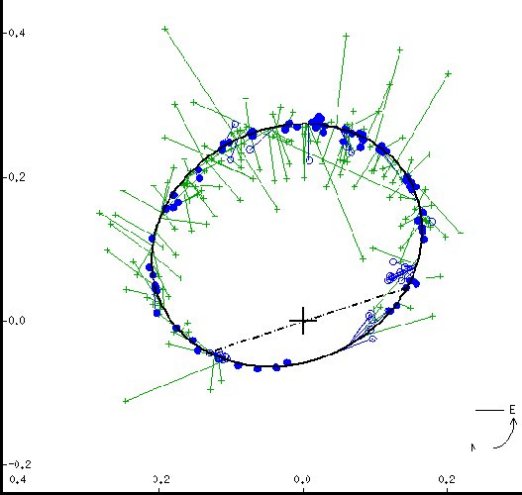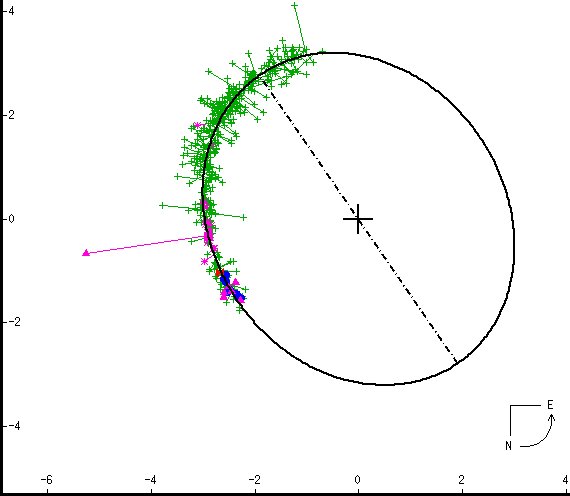

 |
 |
| The image scales are both in seconds of arc. At left, Epsilon Hydrae B orbits the brighter class G giant, Epsilon A (at the cross), with a period of 15.09 years. While on the average the two are separated by 16.6 Astronomical Units, a high eccentricity carries them between 3.5 and 16.6 AU apart. At right is a much more (13 times) expanded view in which Epsilon Hydrae C orbits the close AB pair (again at the cross) every 590 years with a mean separation of 130 AU. In reality, each of the pairs goes around a common center of mass between them. The orbits are distorted into apparent ellipses in which the stars are not at the foci because of the orbital tilts against the plane of the sky (50 degrees at left, 33 degrees at right) and the orbital orientations. (W. I. Hartkopf and B. D. Mason, Sixth Catalog of Orbits of Visual Binary Stars, US Naval Observatory Double Star Catalog, 2006.) | |